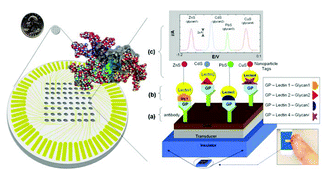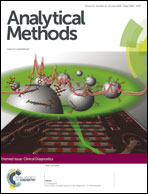Cancer glycan biomarkers and their detection – past, present and future
Abstract
Glycans are important in most biological processes, yet the exact insights into their functions remain enigmatic due to the lack of suitable tools for their analysis. Glycoproteins have recently emerged as valuable biomarkers for a wide range of diseases and some of them (e.g. AFP-L3) have already been approved by the US Food and Drug Administration for cancer diagnosis. Increasing attention is now being placed on the examination of glycan modifications because they can increase the predictive values of glycoprotein biomarkers. The main challenge to implementation of glycan biomarkers in clinical settings, however, remains the availability of suitable analytical methods for their identification and detection. The ability to rapidly detect glycan biomarkers that are indicators of pathology such as inflammation, infection and cancer with high sensitivity and specificity using glycobiosensors will without doubt offer better tools for early-stage disease diagnosis. In this critical review we first provide a brief overview of the existing technologies for glycobiomarker identification and then discuss methods for their detection focusing on the advances in microarray technologies made in the past few years. Current challenges and perspectives on the emerging and future technologies that may help springboard this important field from the academic domain to viable diagnostic tools are discussed.

- This article is part of the themed collection: Clinical Diagnostics

 Please wait while we load your content...
Please wait while we load your content...